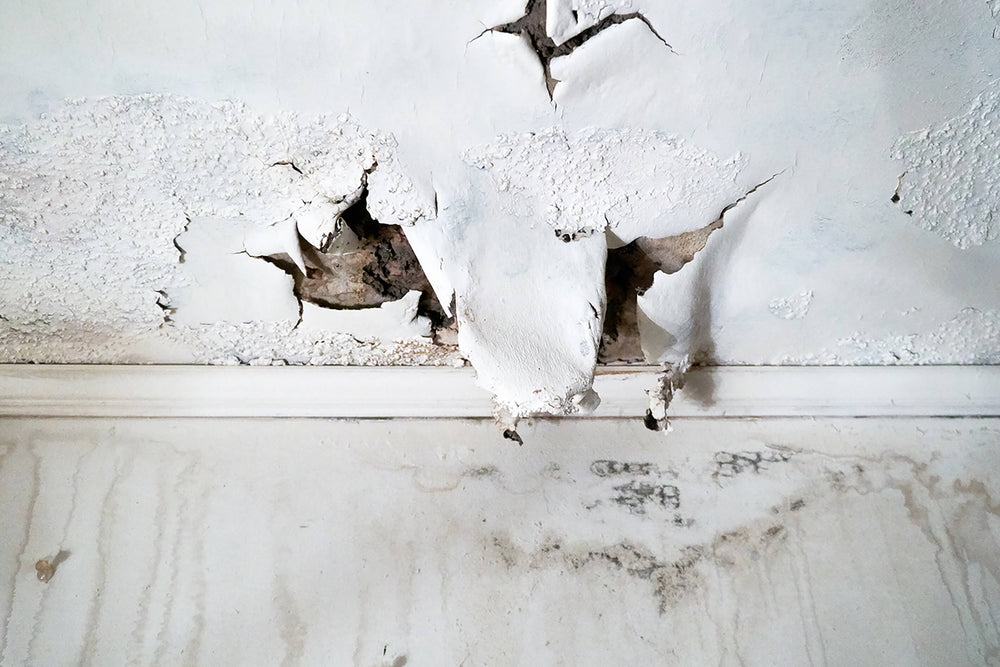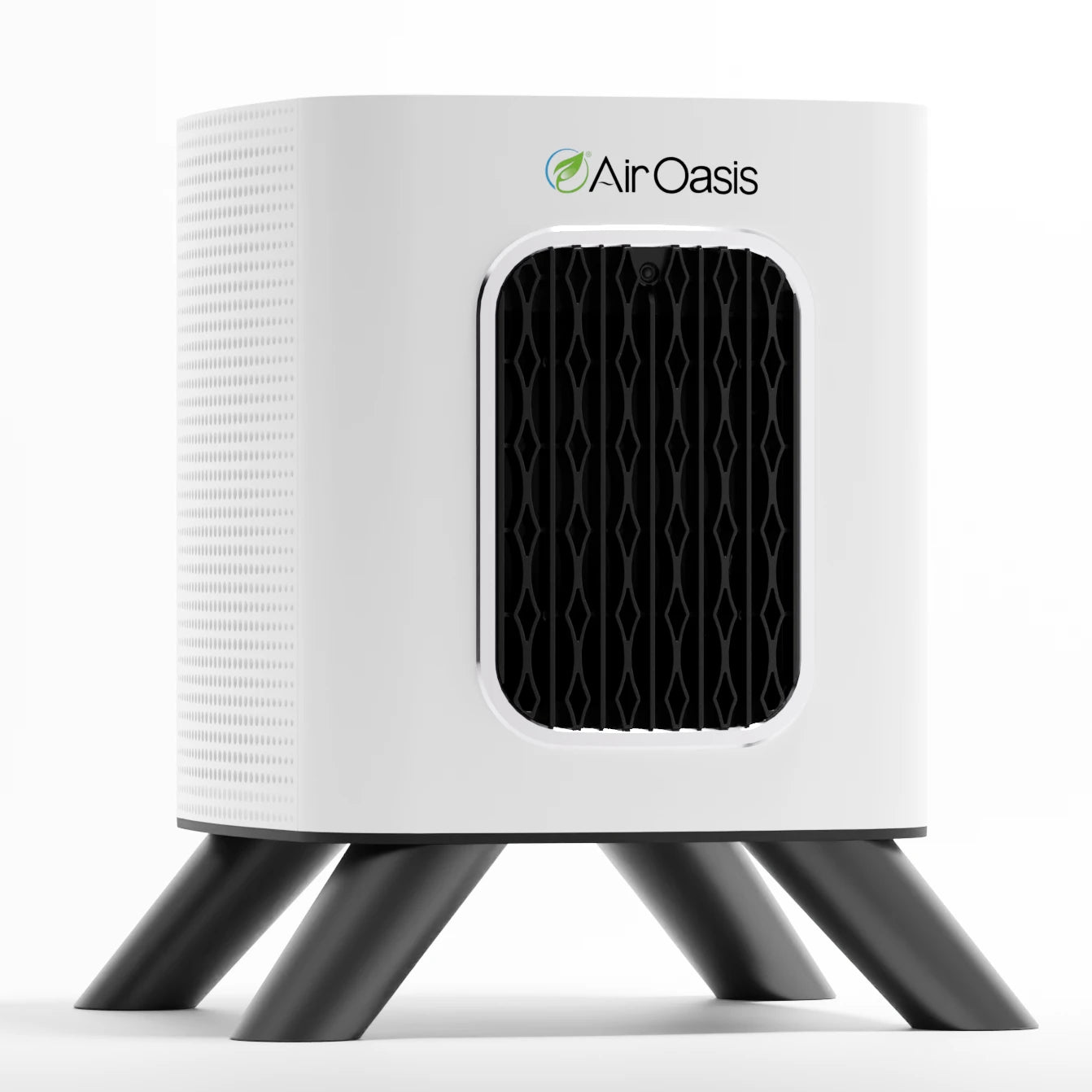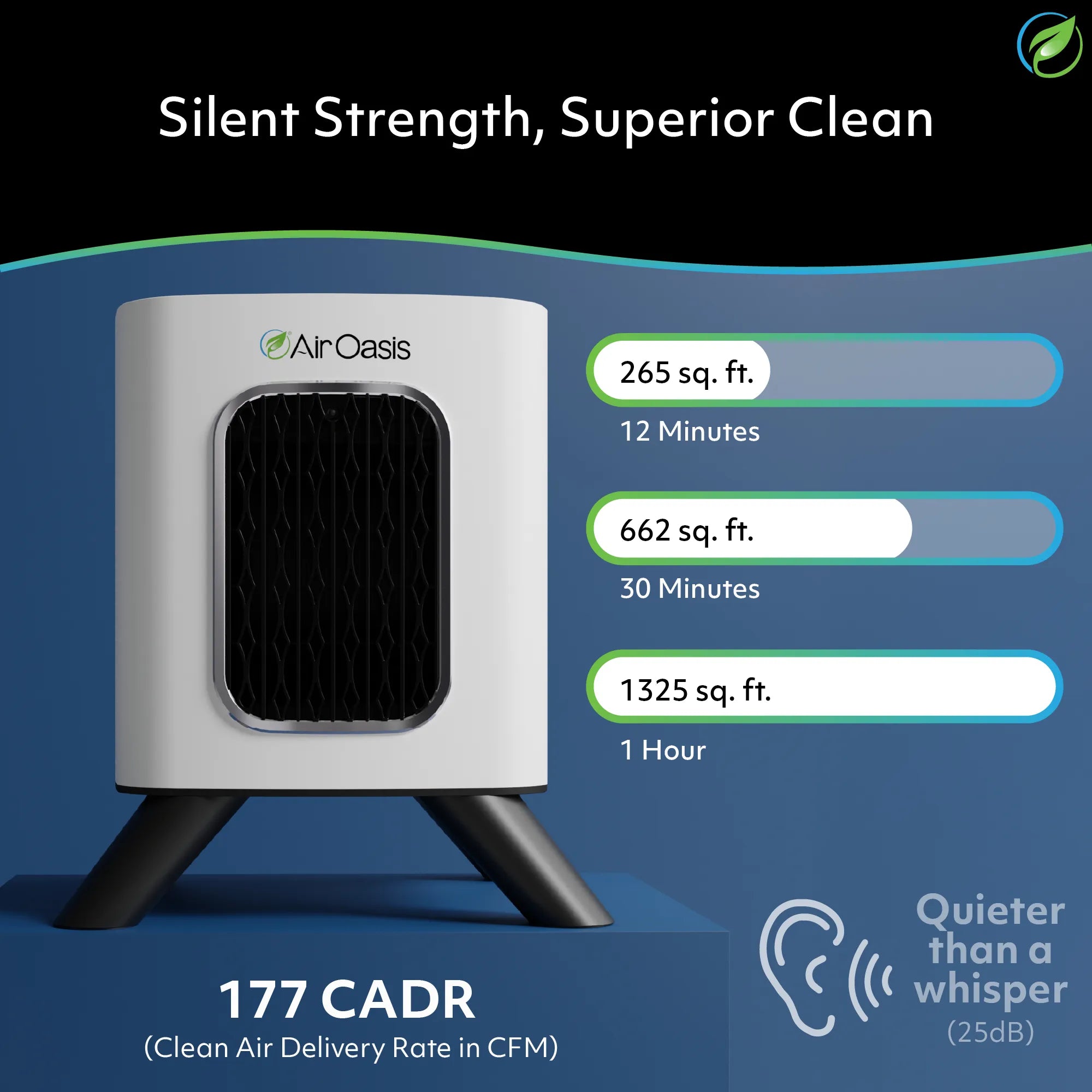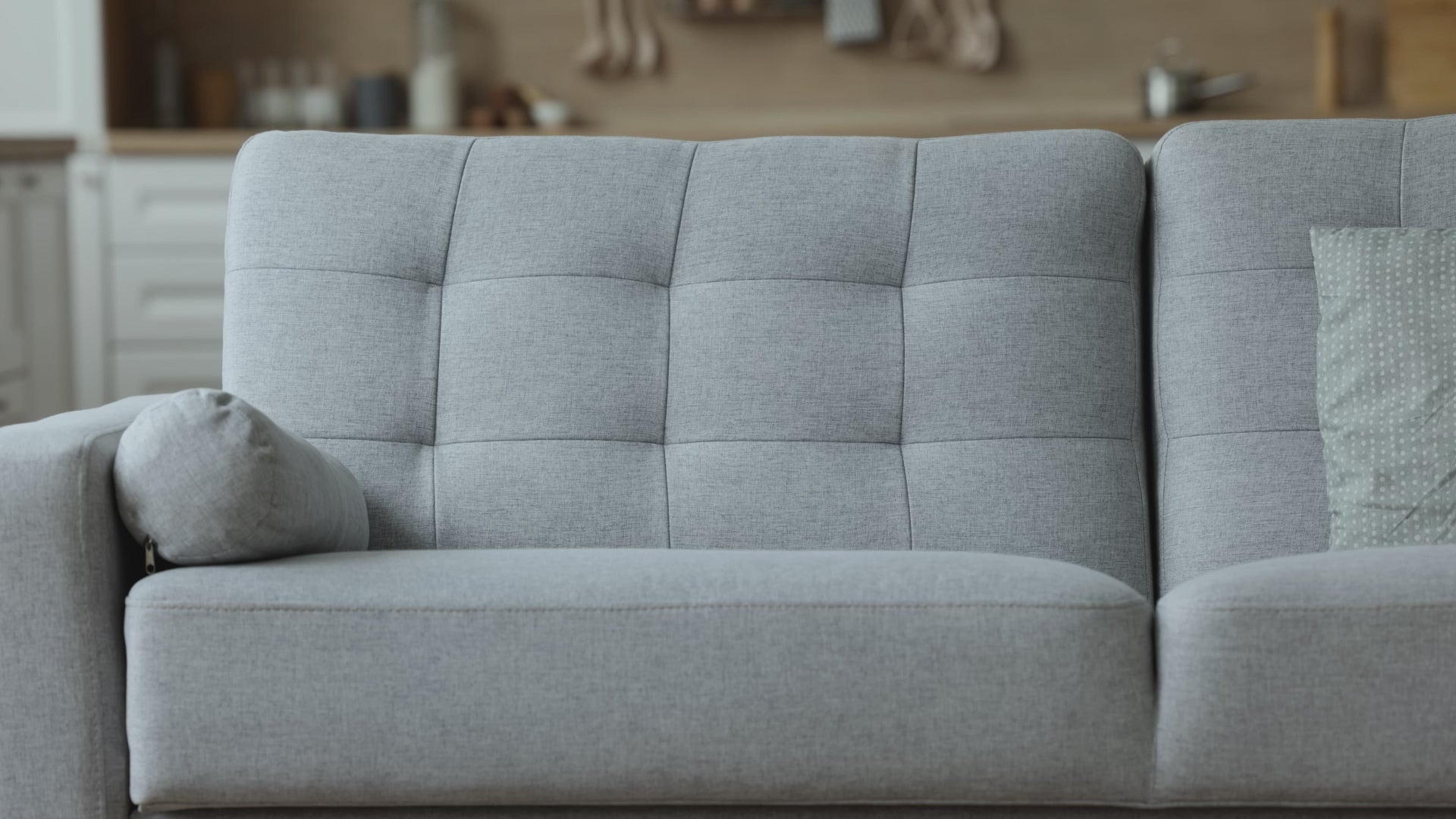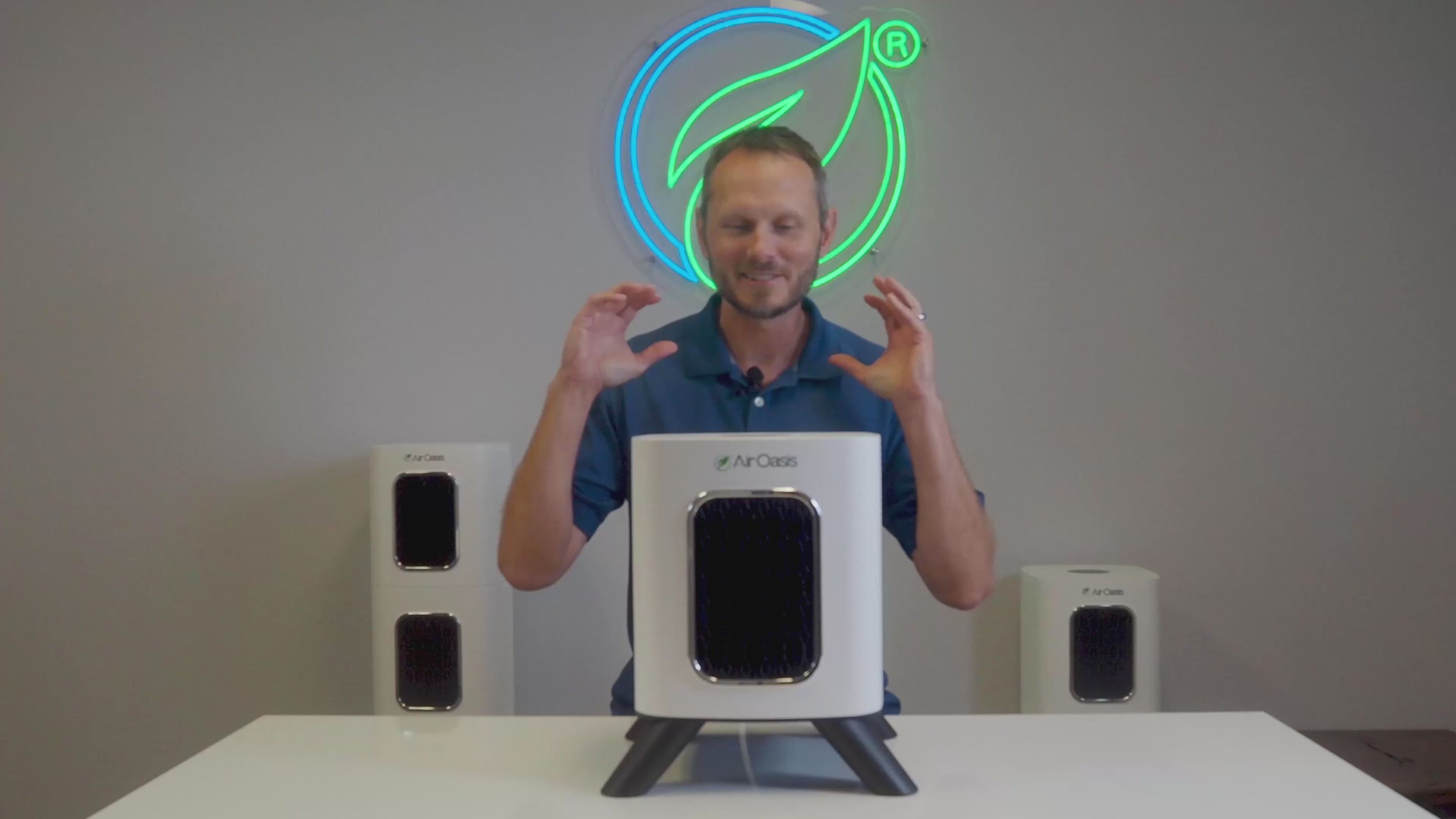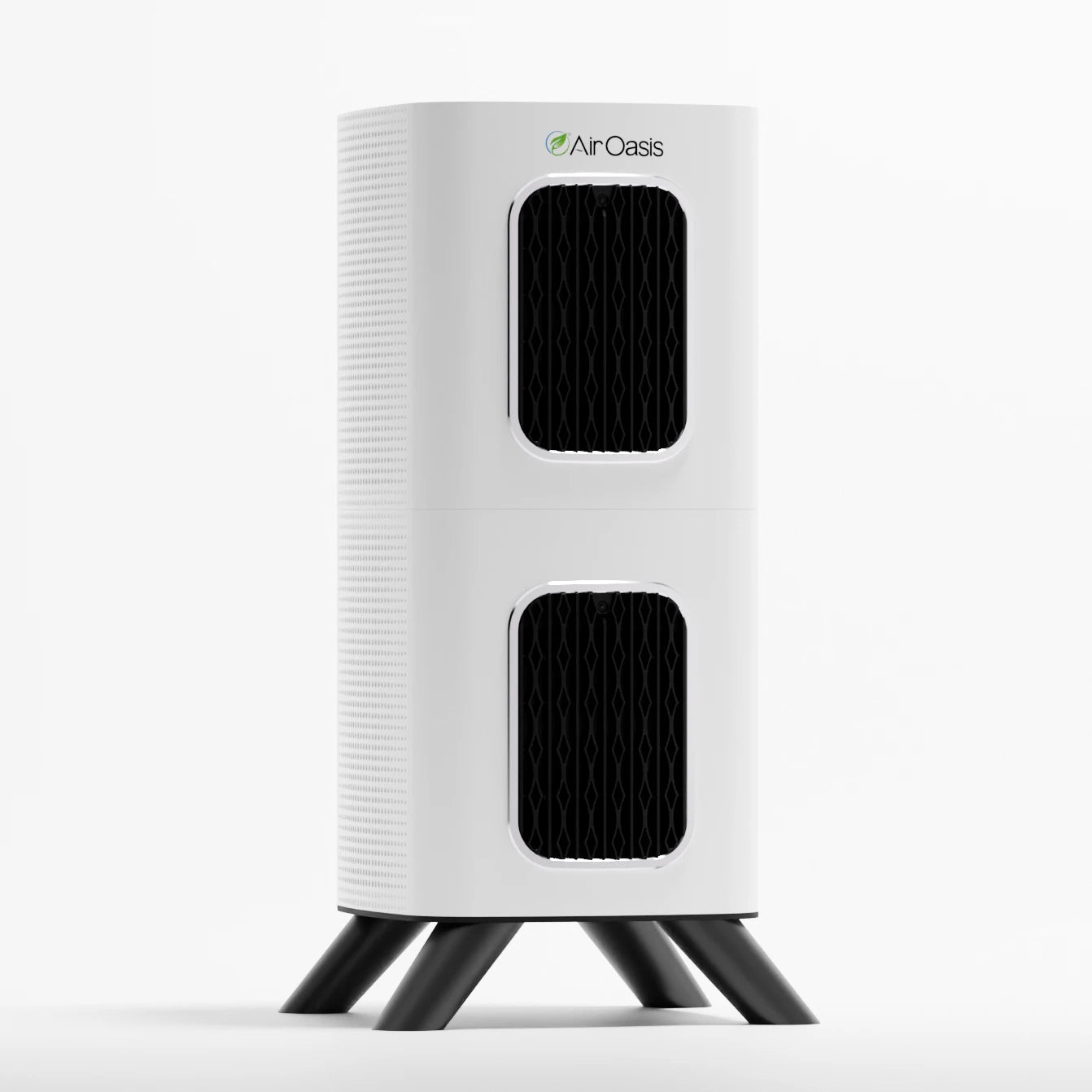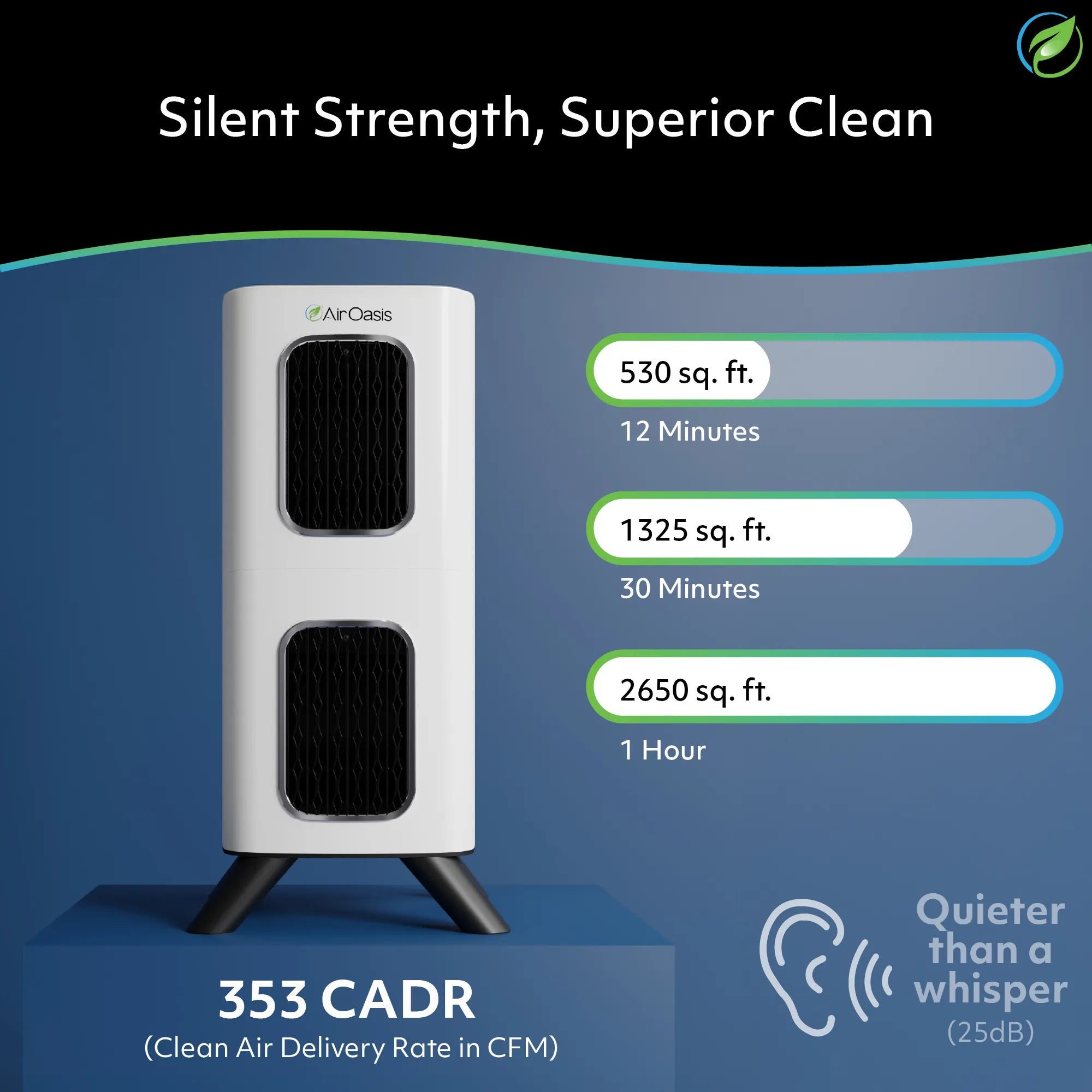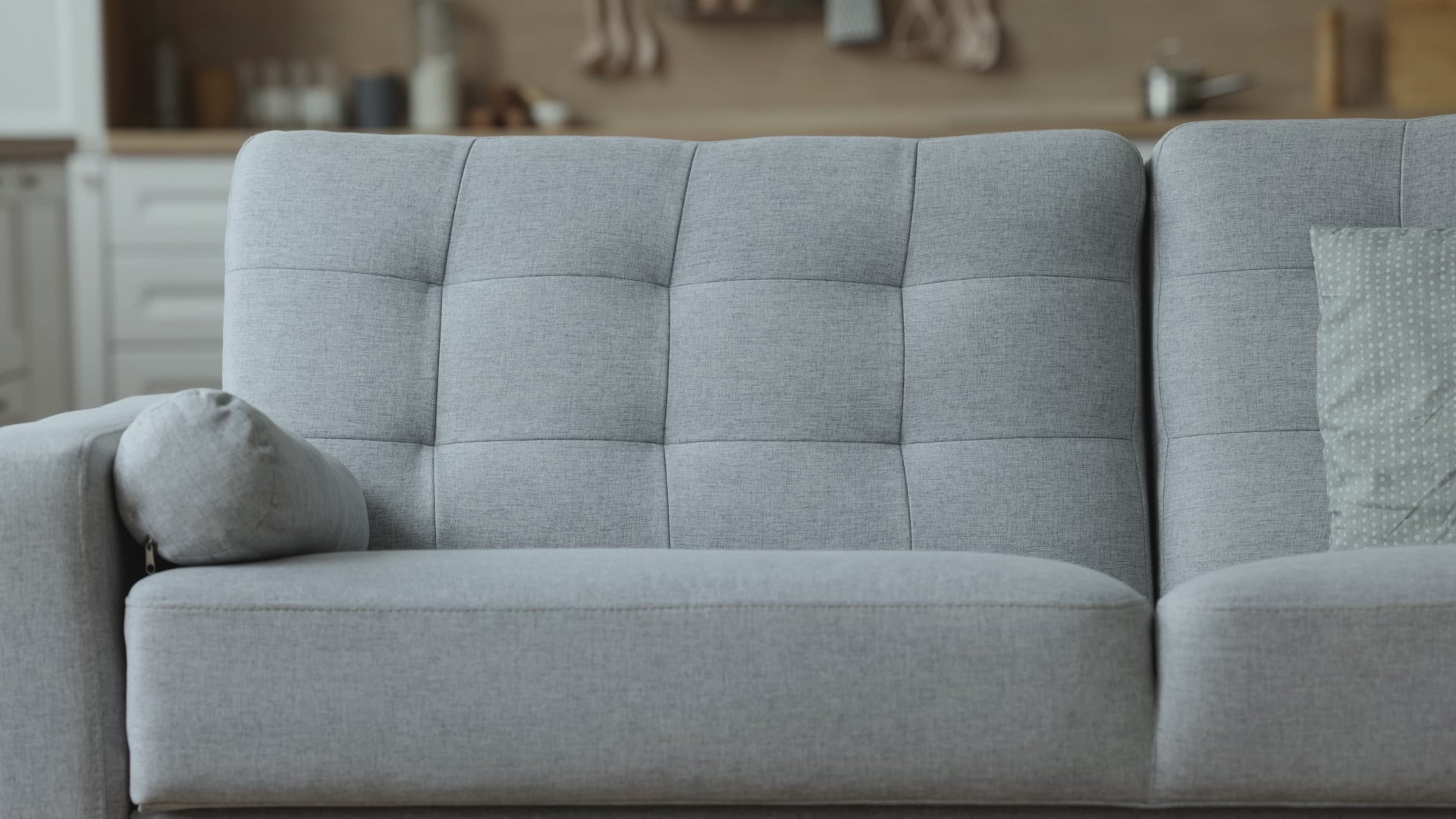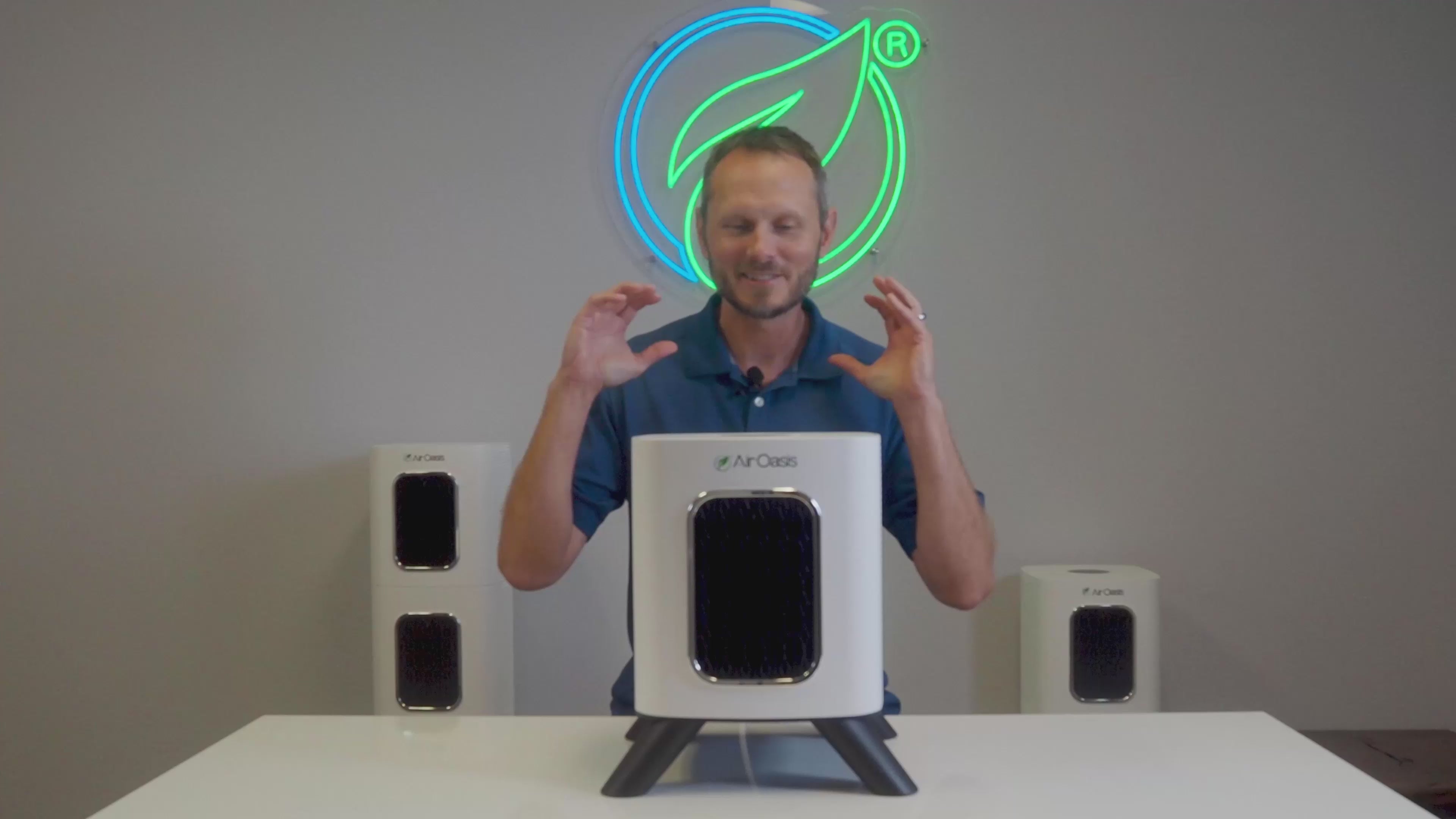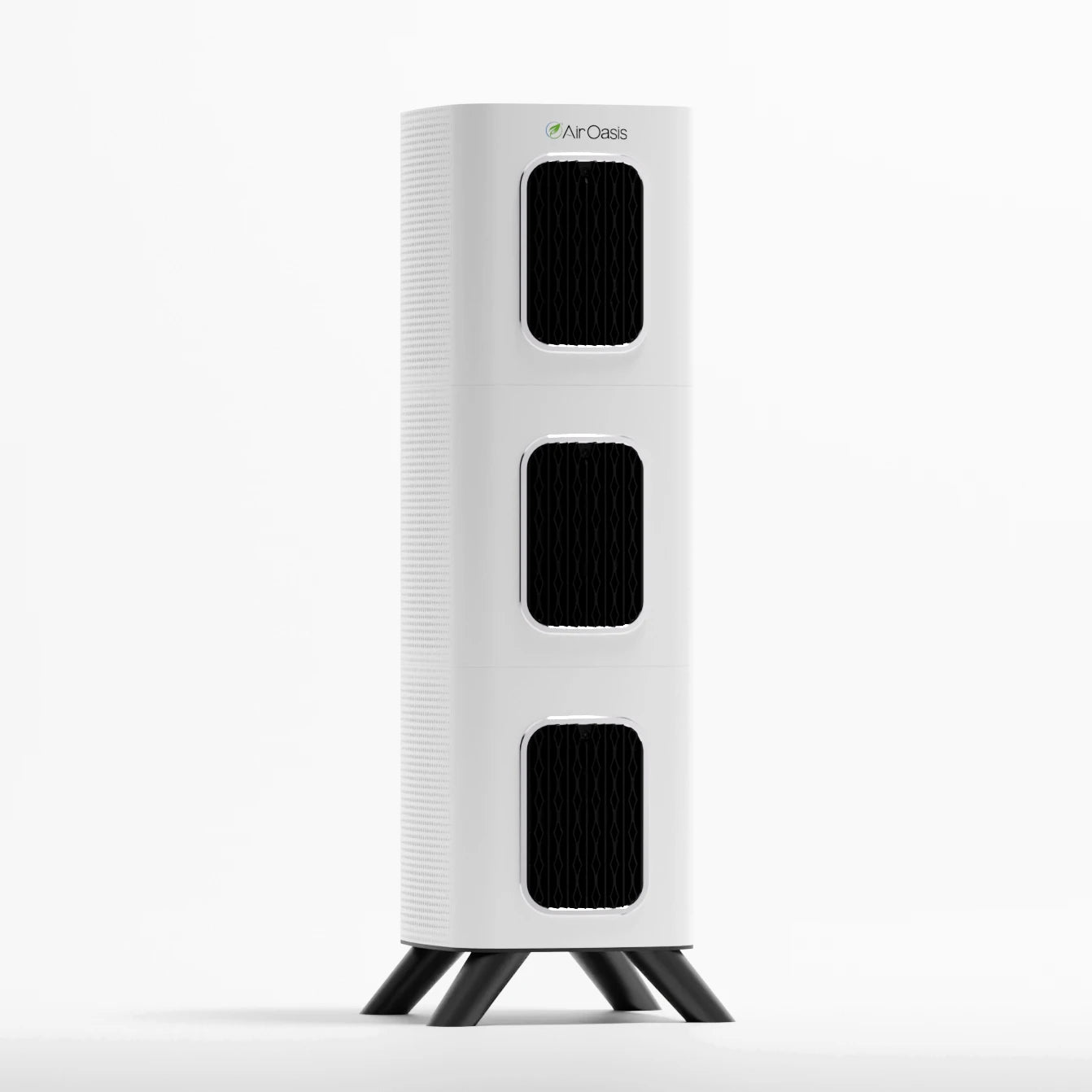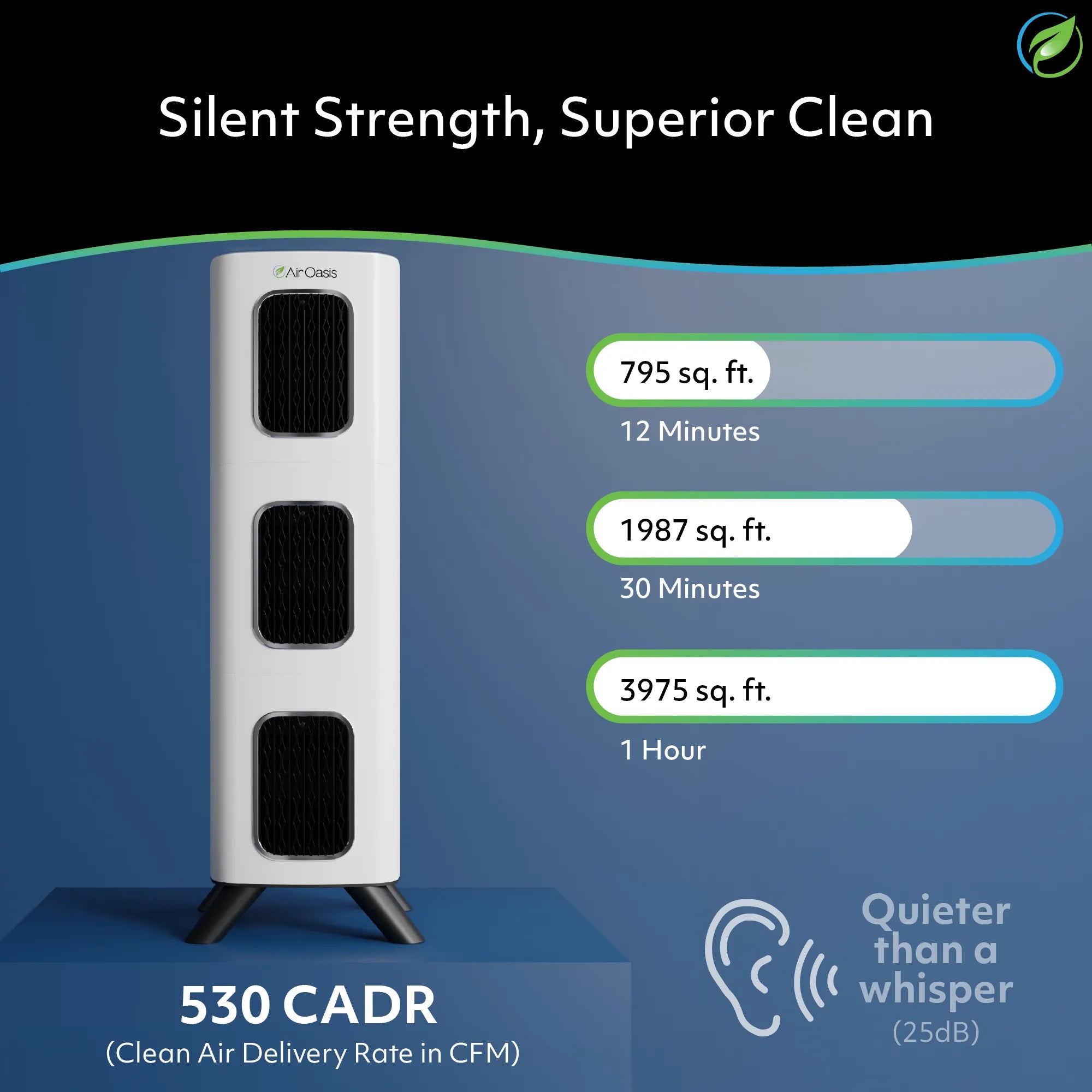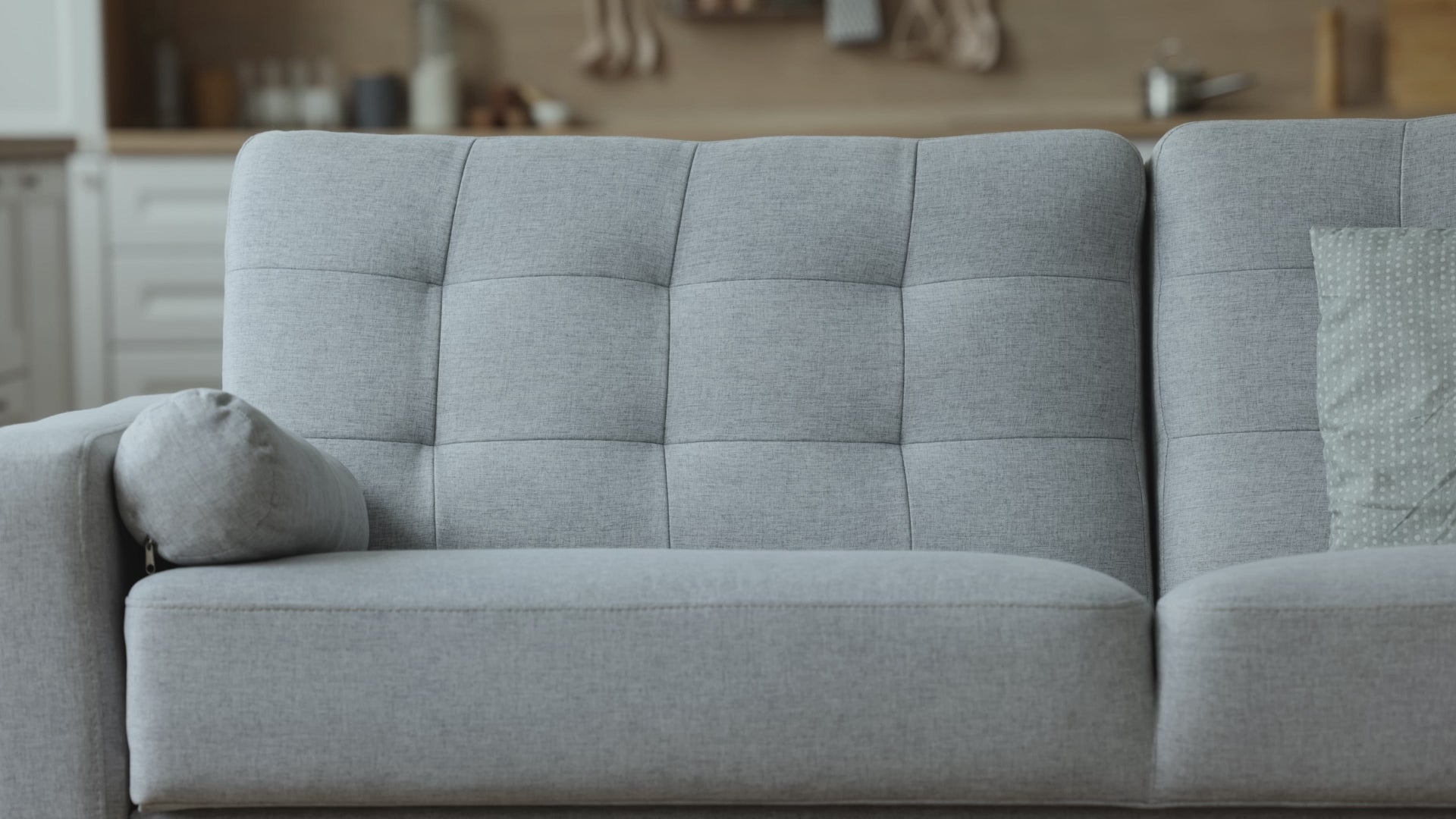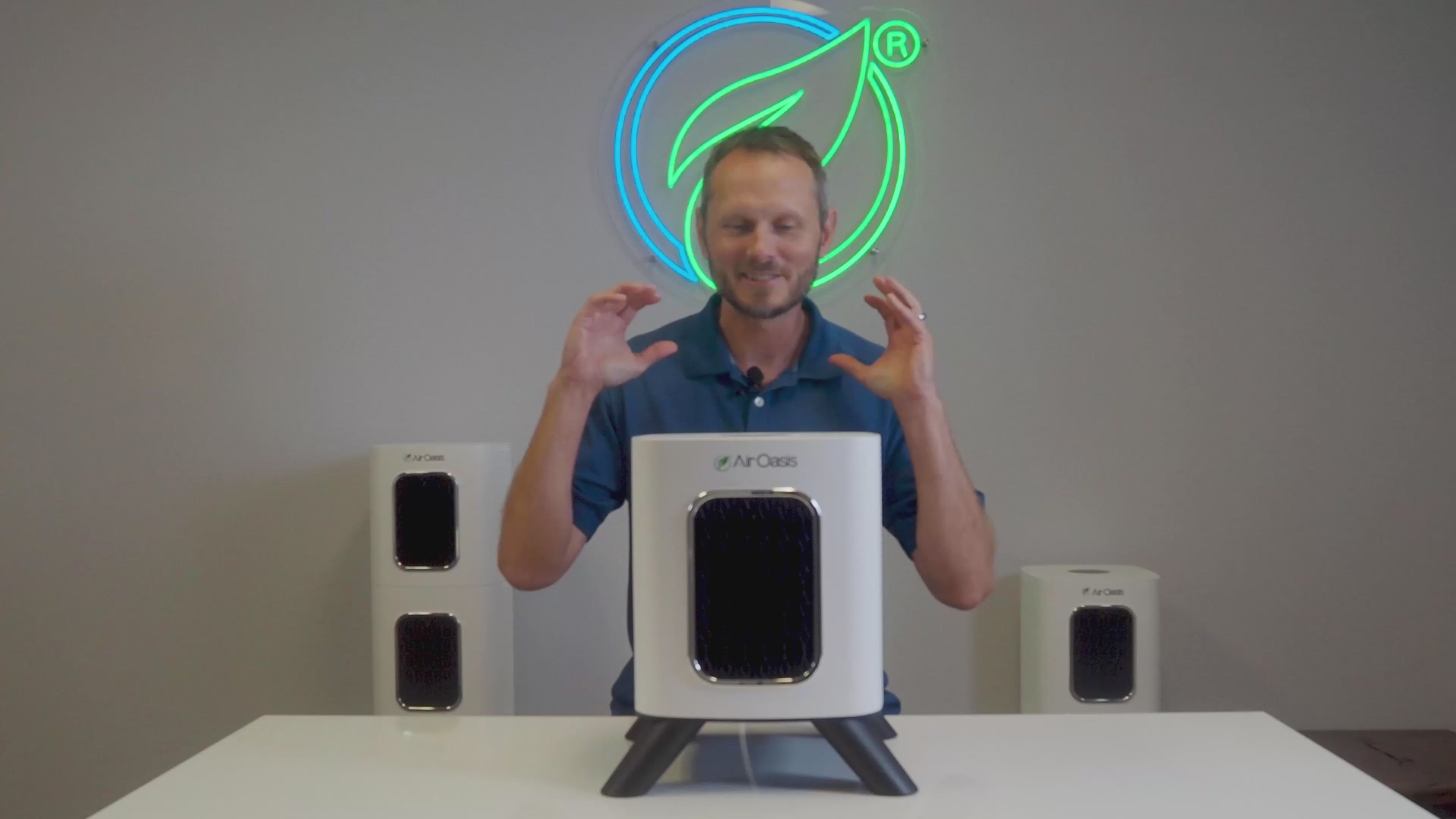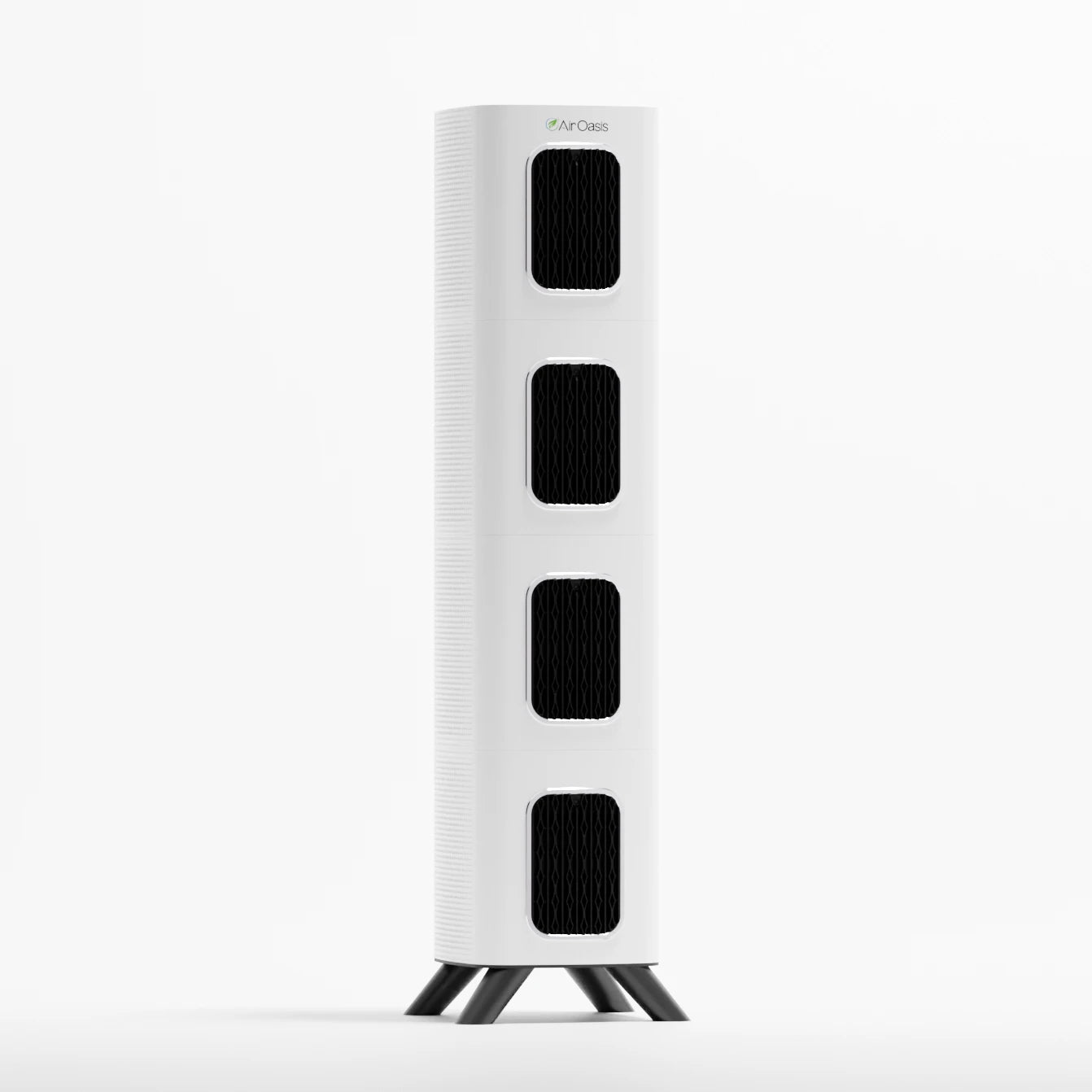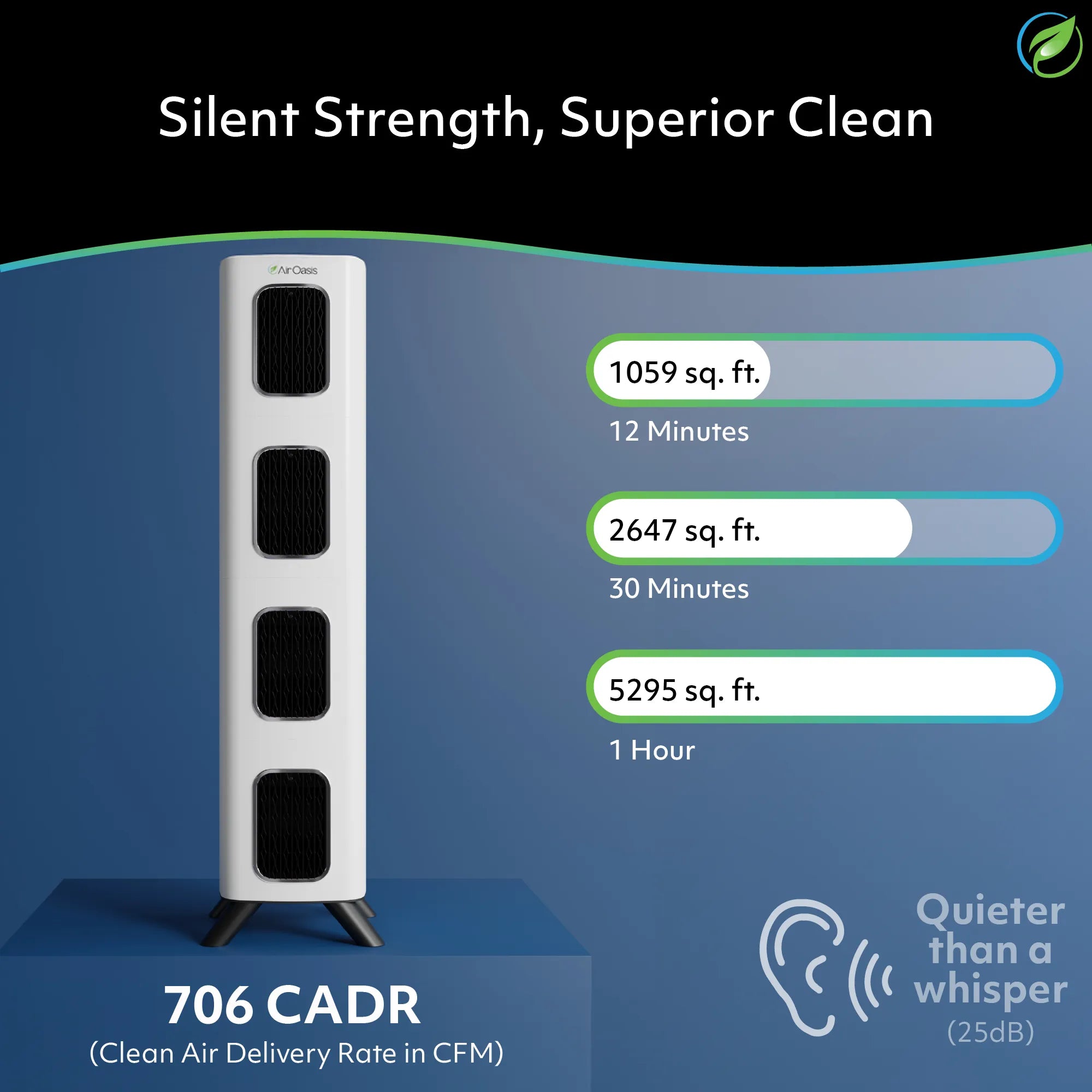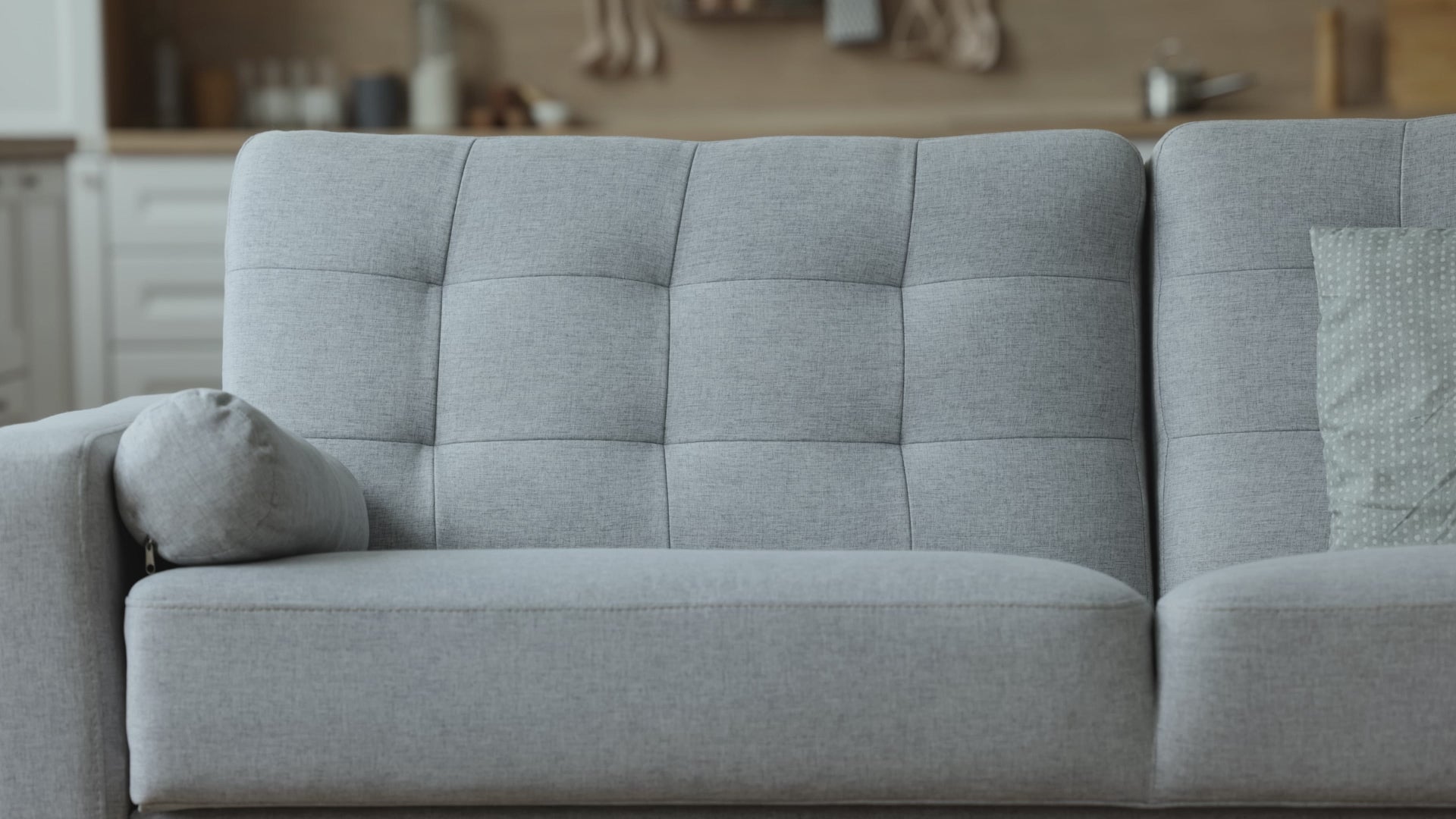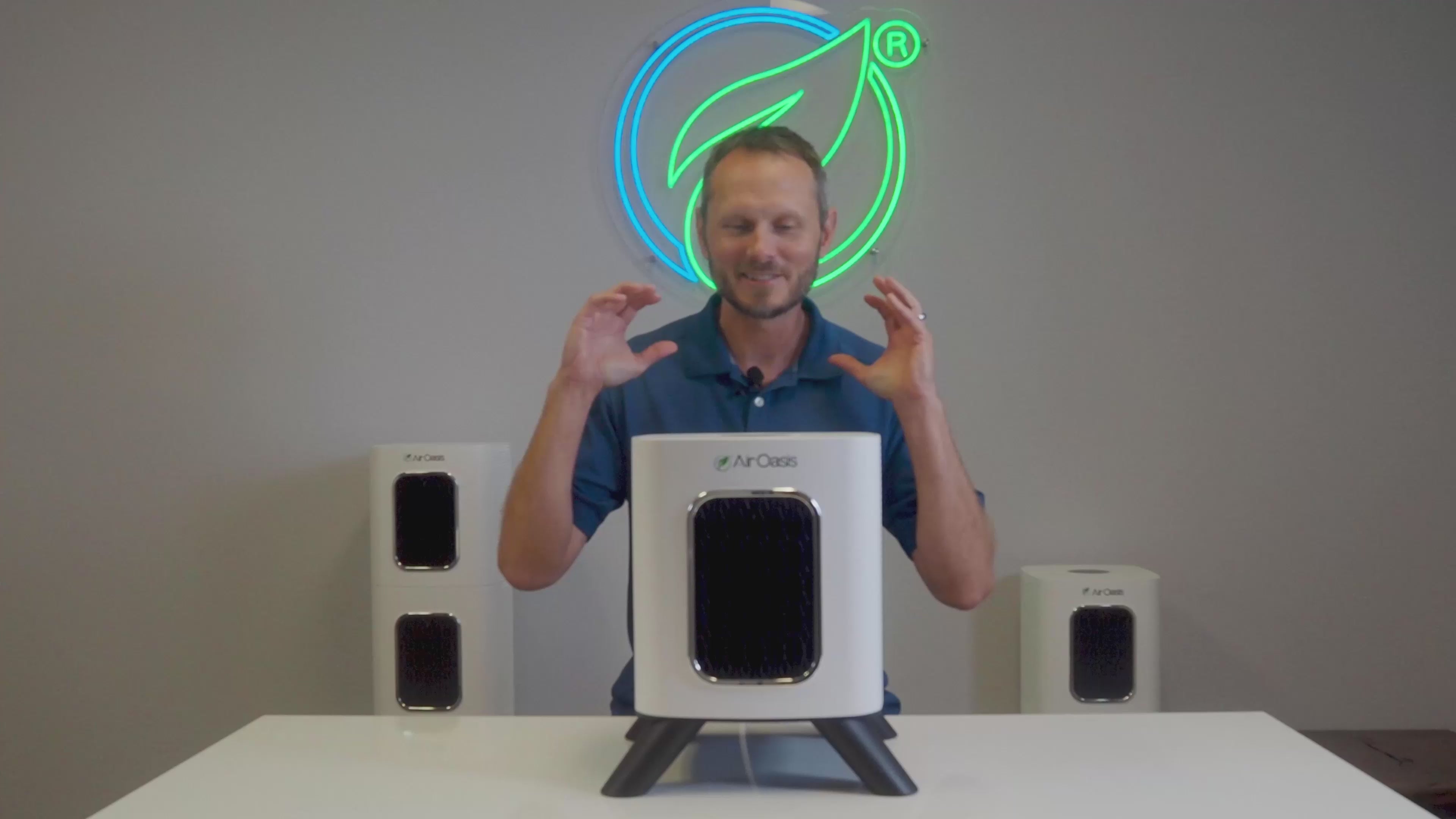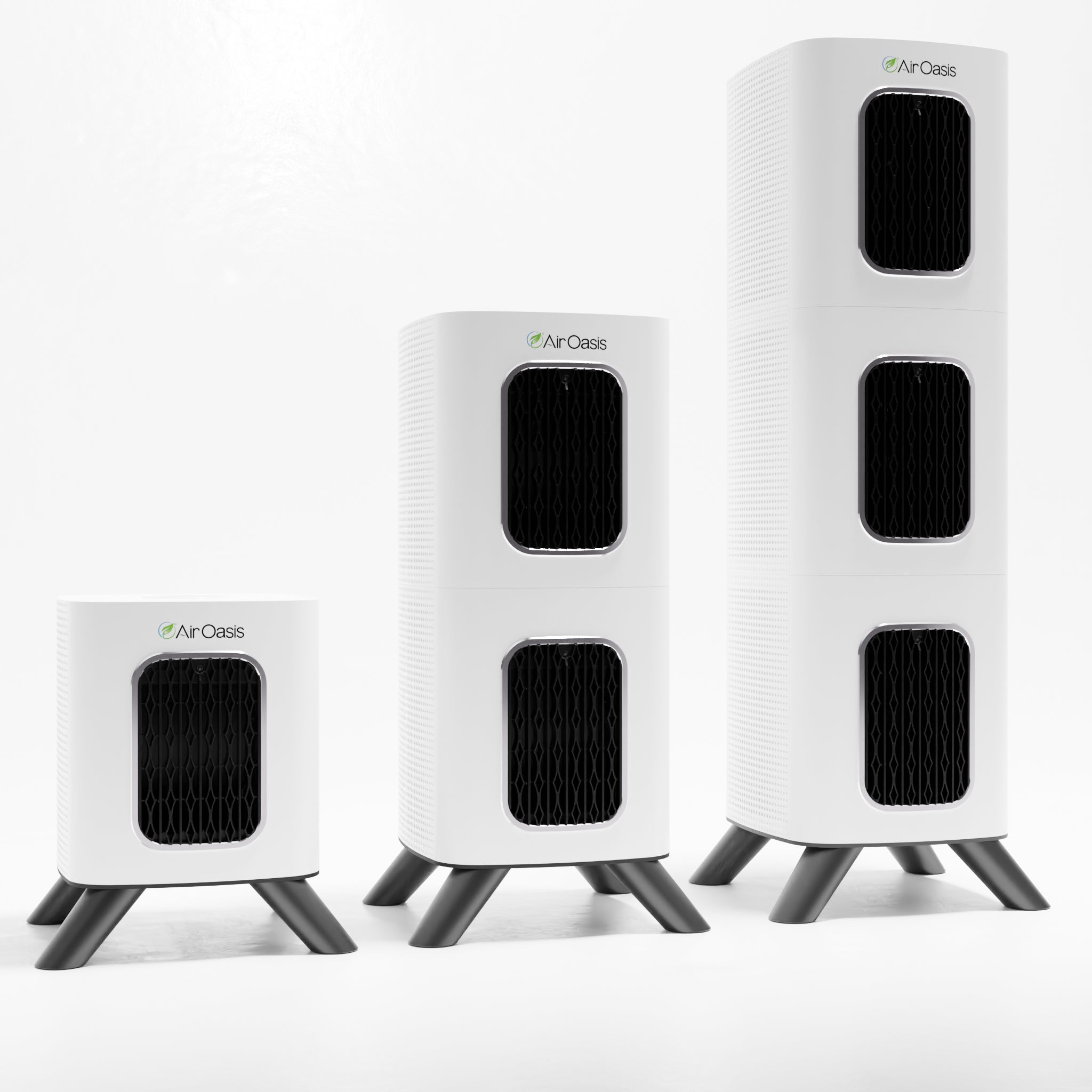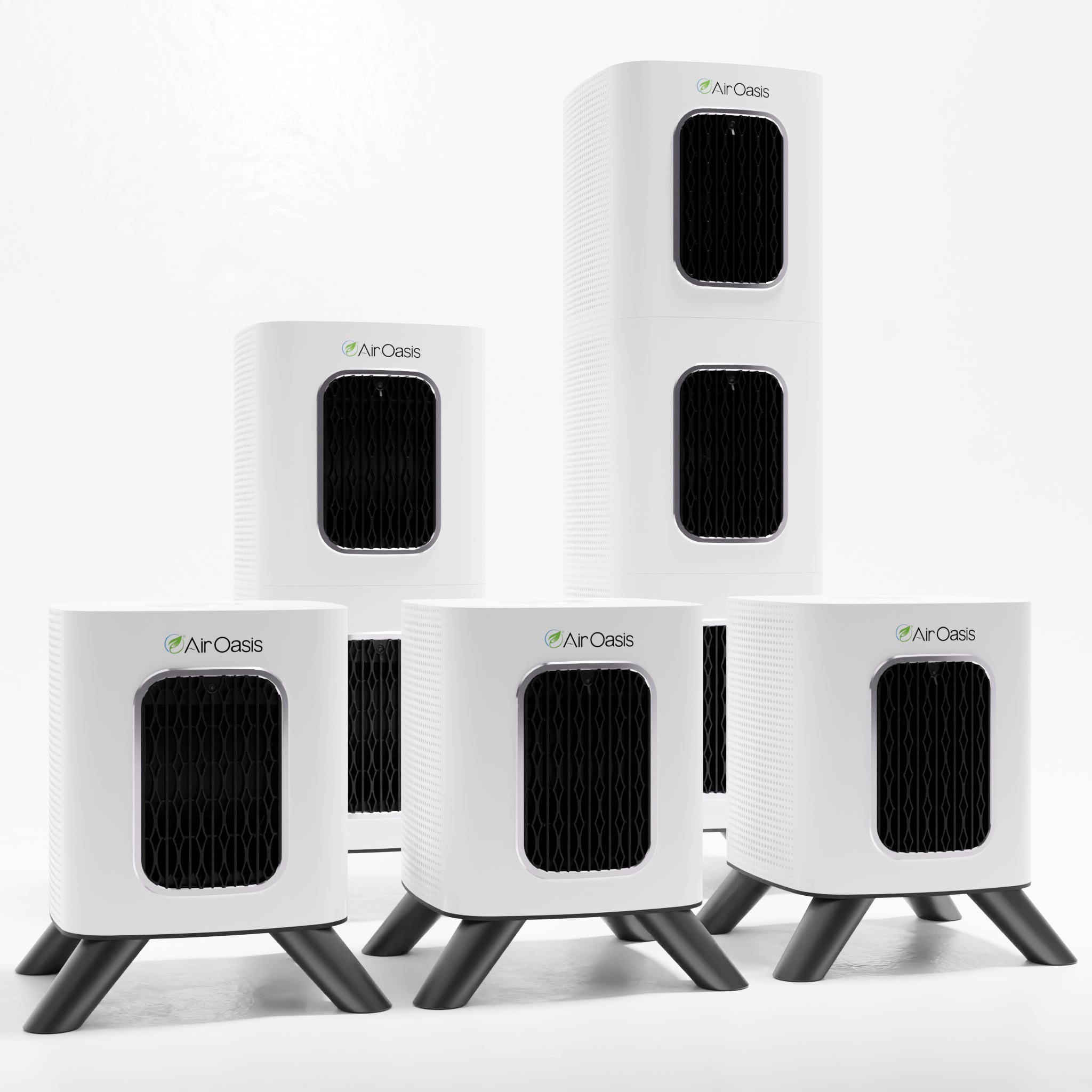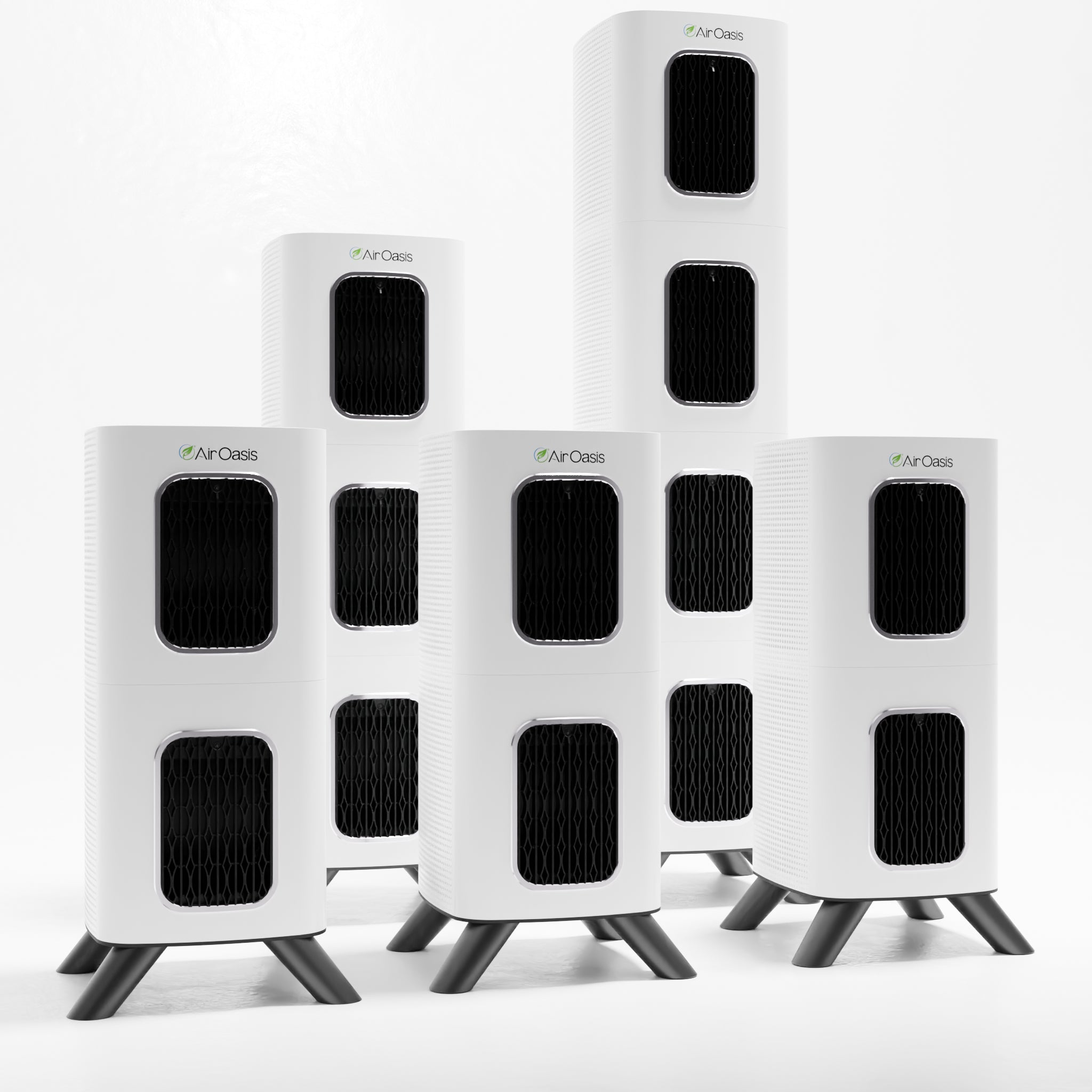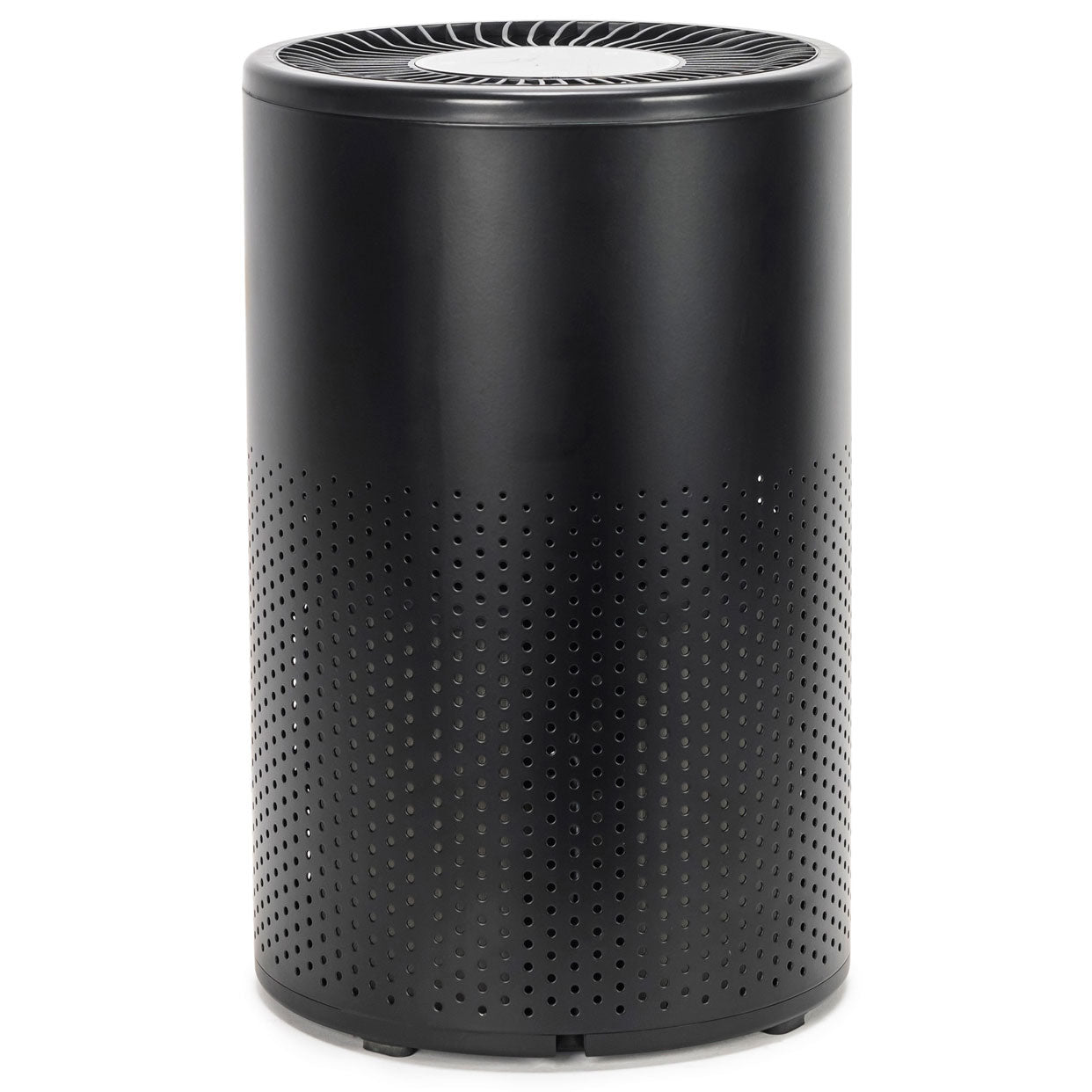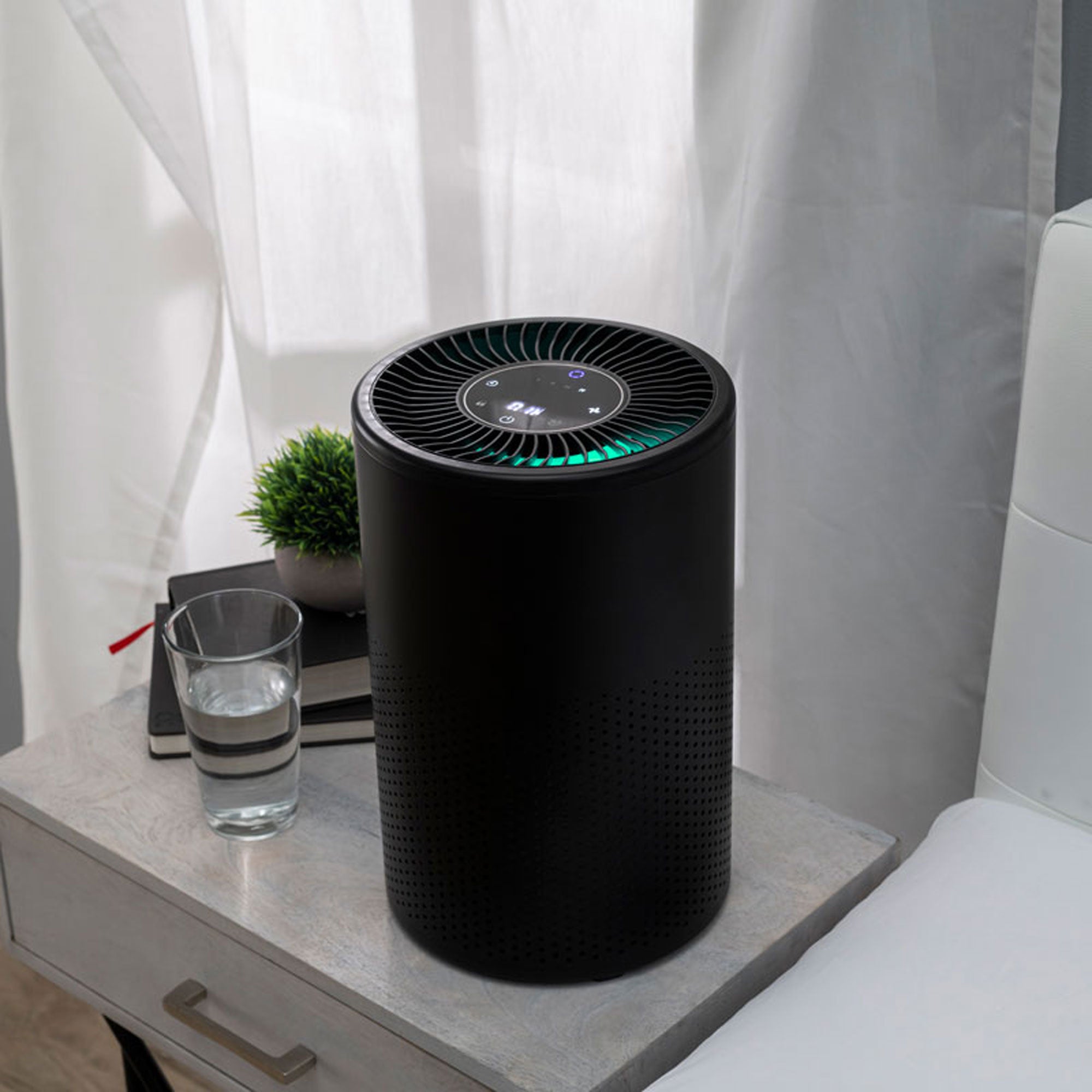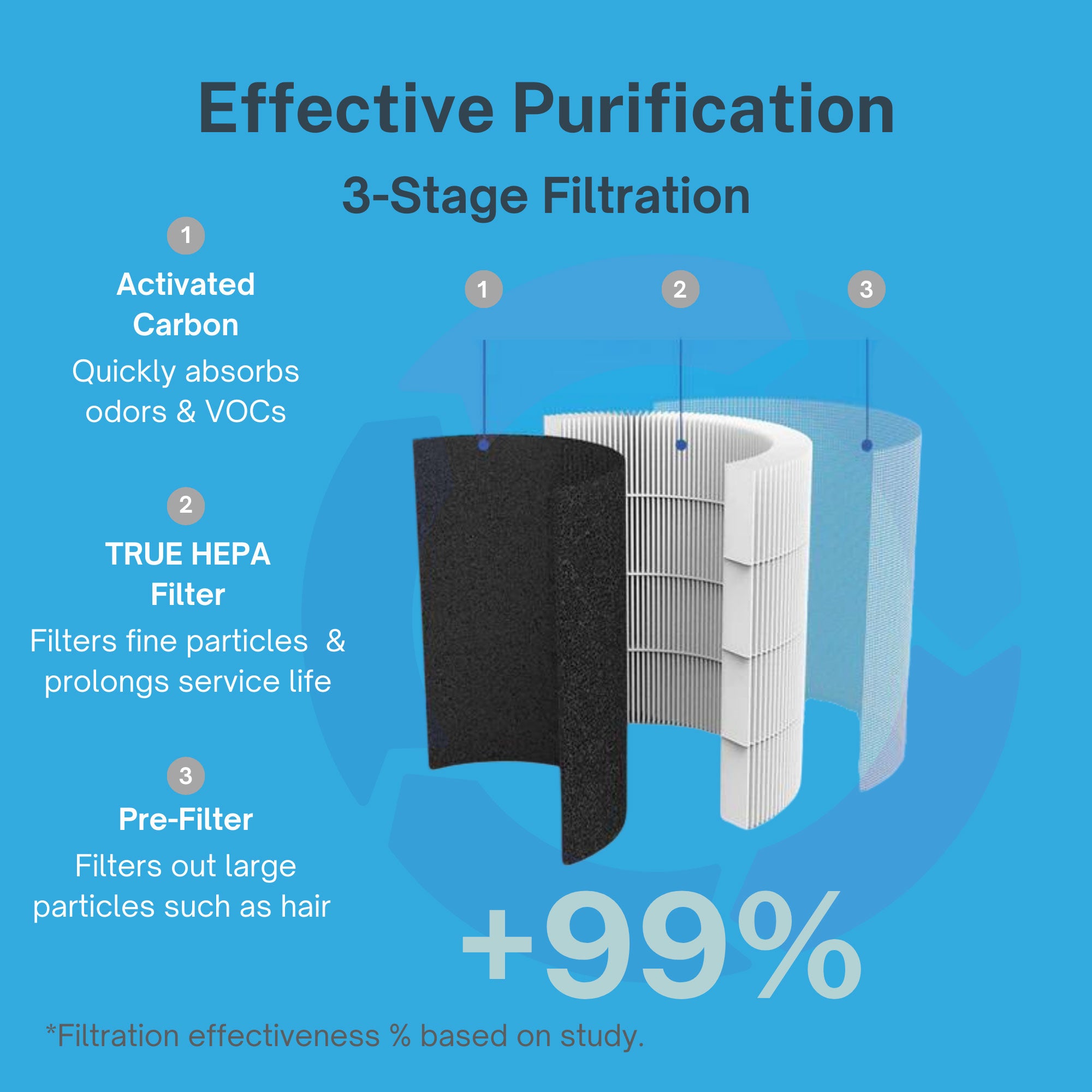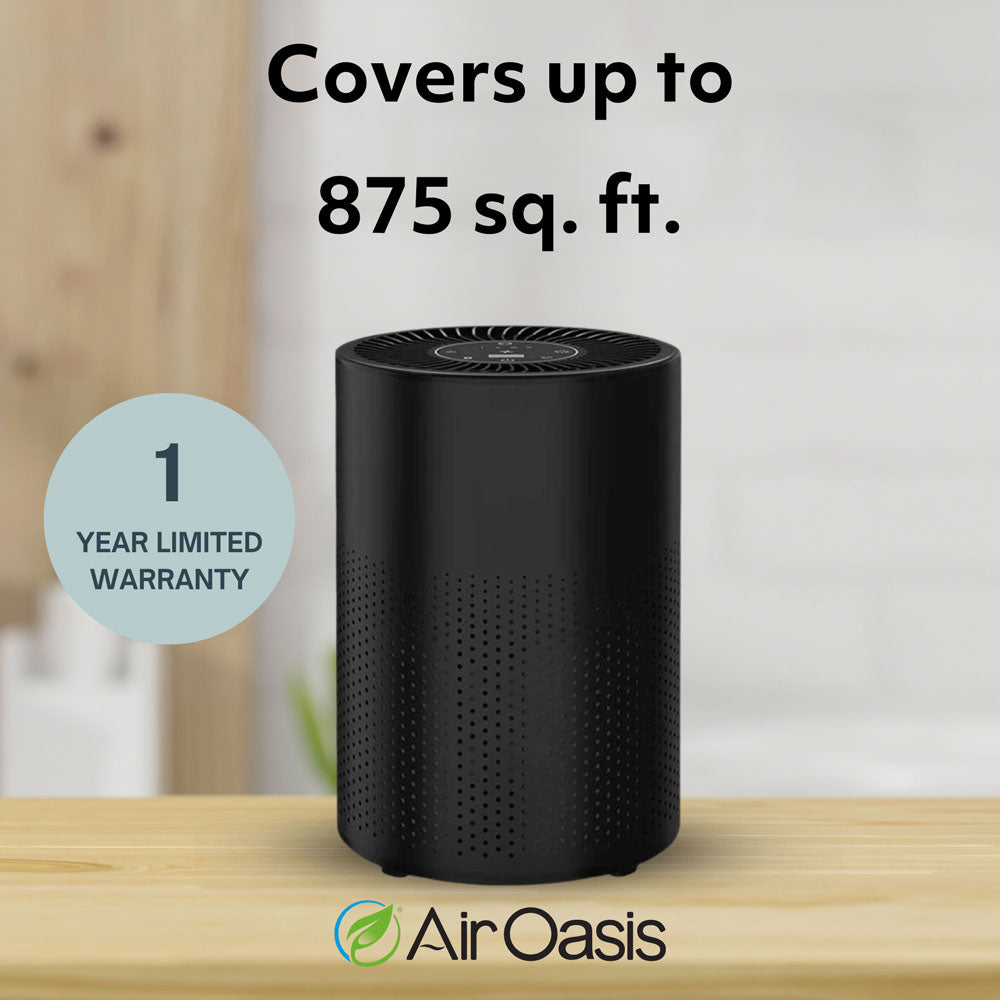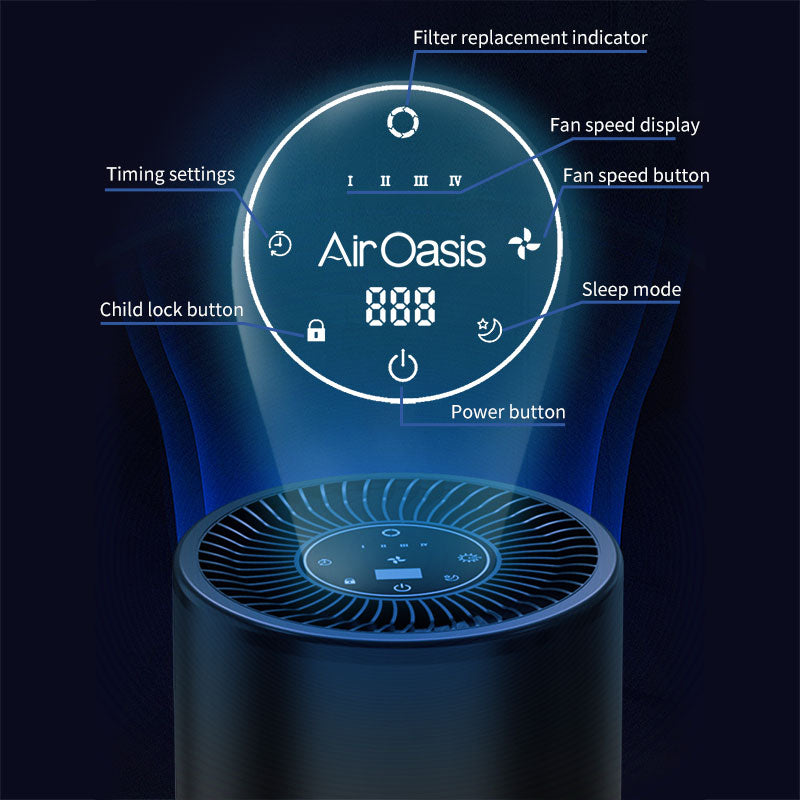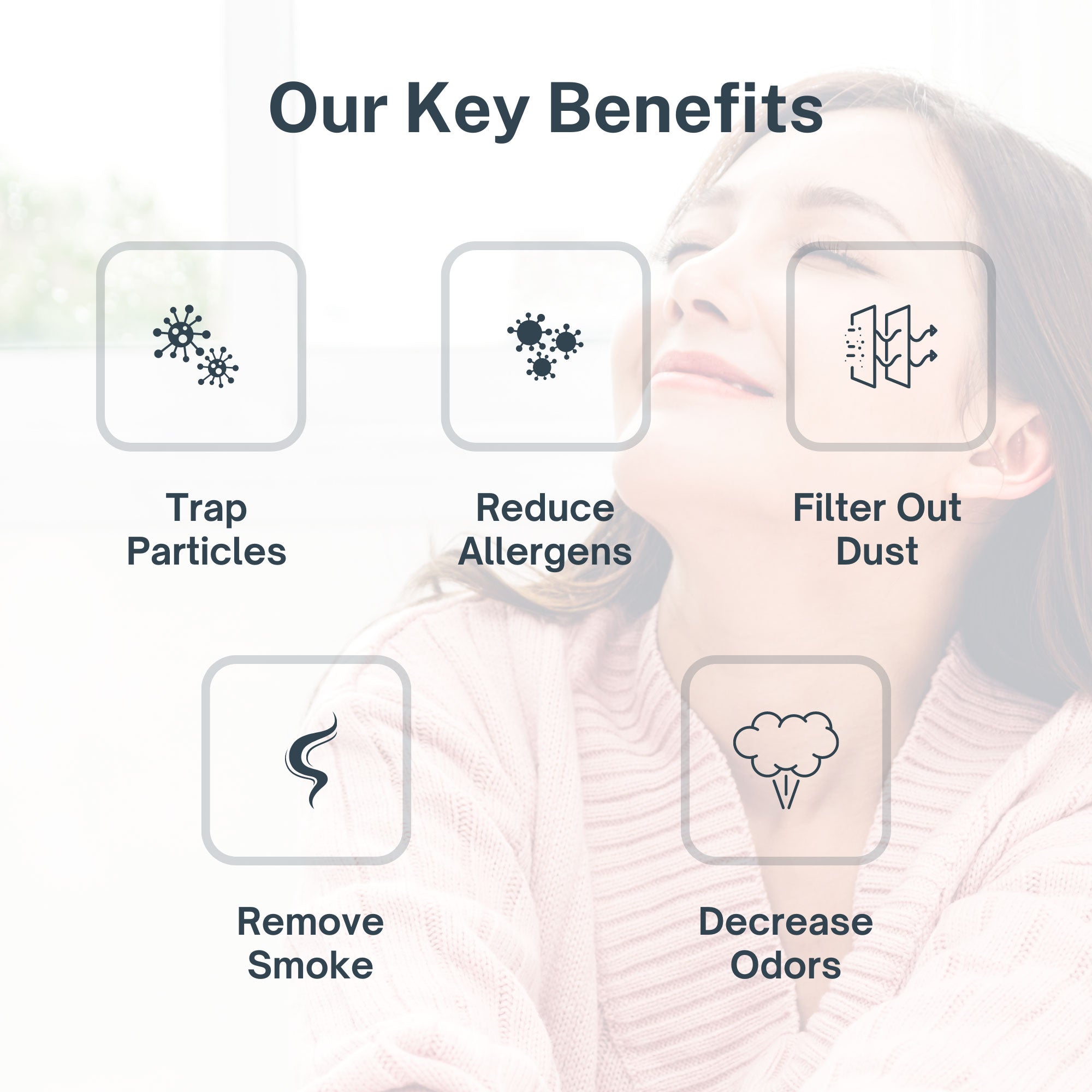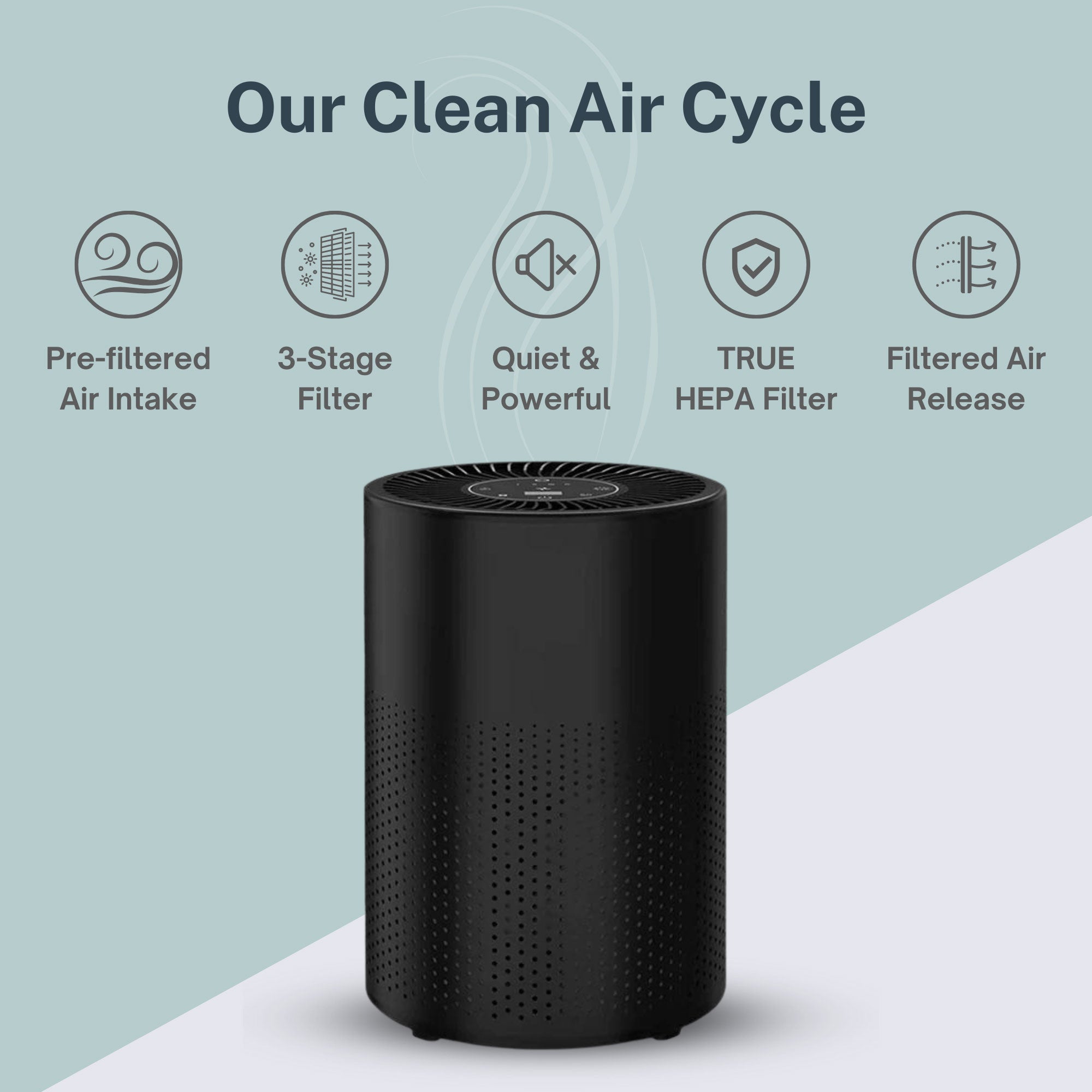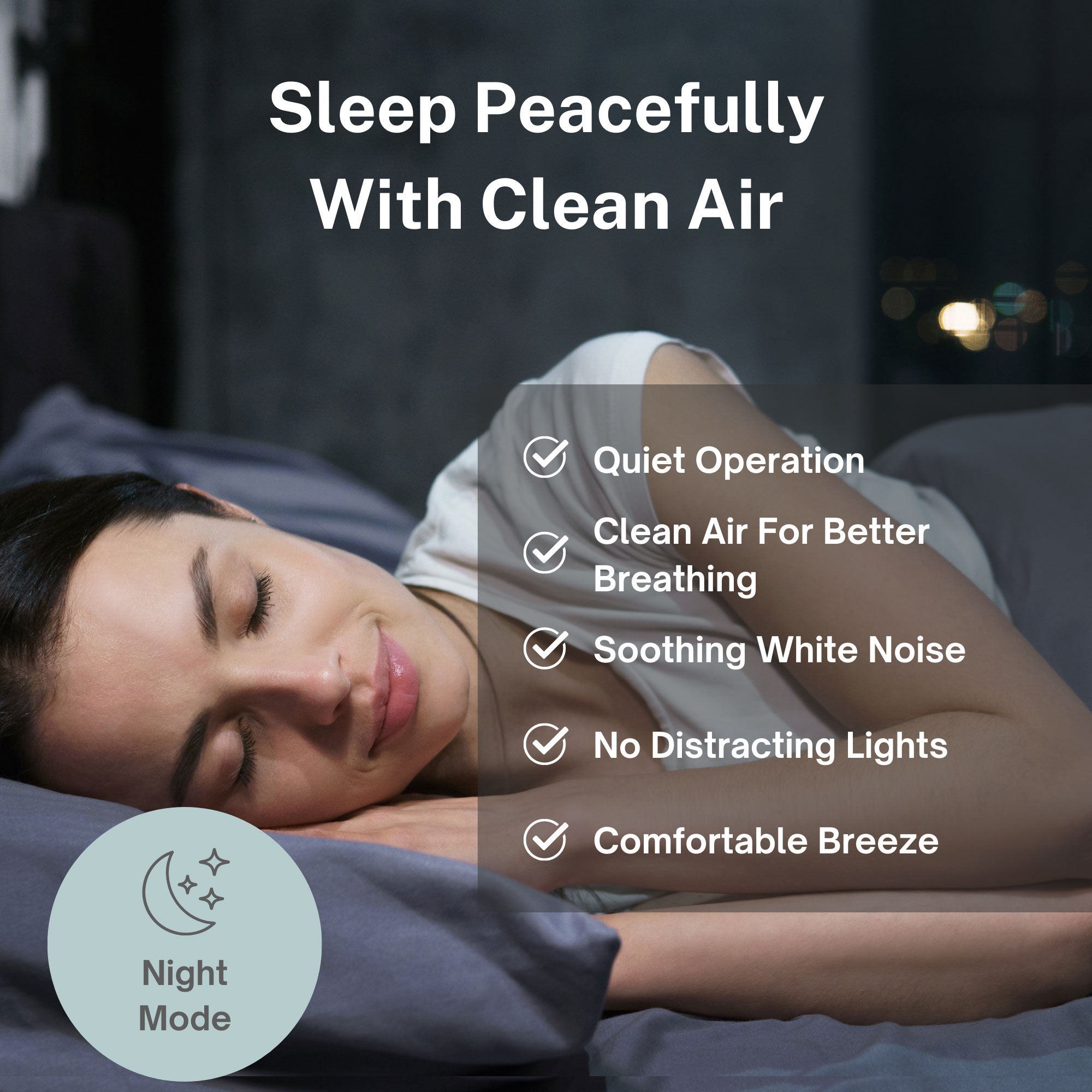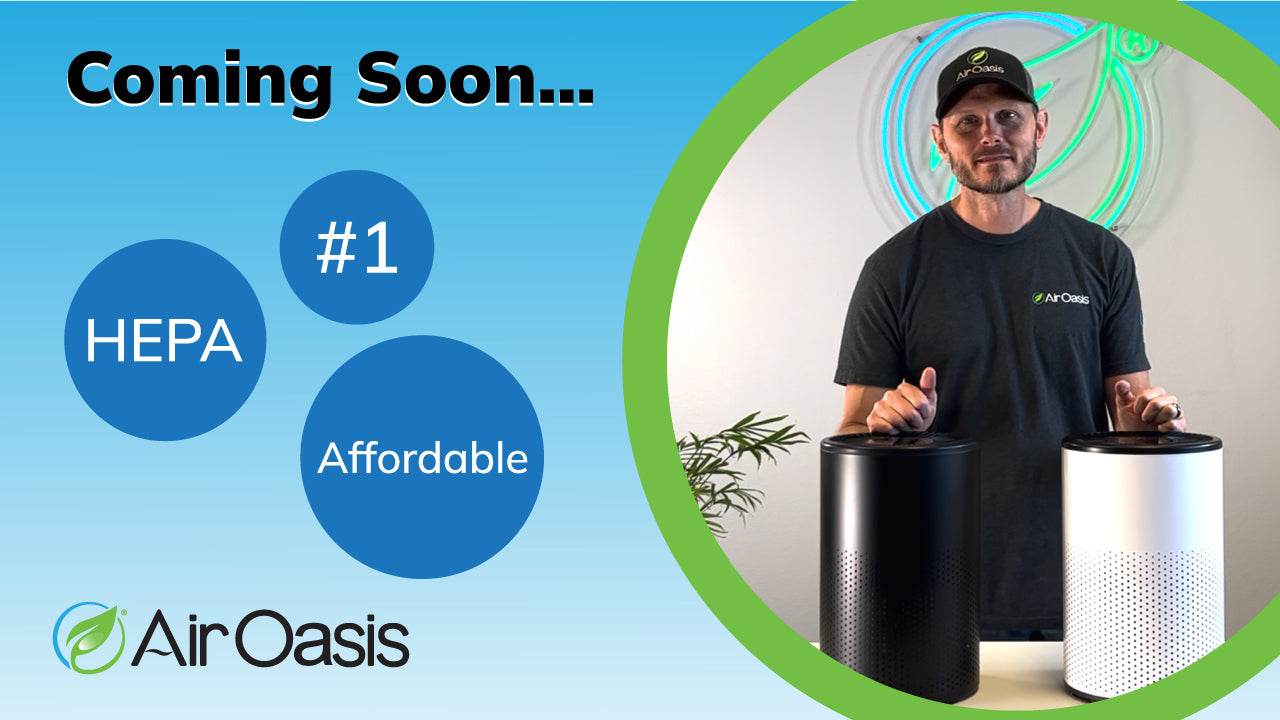Mold toxicity, also known as biotoxin illness or mycotoxin illness, is an elusive and insidious health concern. Its symptoms can be vague and mimic other diseases, and mold can be invisible in your home, making it even more challenging to find the culprit.
Below, we will discuss mold toxicity, its symptoms, who is at risk, and the impact of mold on indoor air quality. We will also highlight the importance of air purification for those suffering from mold toxicity and the vital role home air purifiers play in creating a safe and healthy environment.
What is Mold Toxicity?
Mold toxicity refers to health issues caused by mold exposure in buildings with hazardous amounts of mold growth. Mold naturally grows in damp environments and releases spores and mycotoxins into the air, which can cause various symptoms and illnesses.
When mold spores are inhaled, the mycotoxins can impact the immune system, respiratory system, brain function, and more. Mold toxicity is more likely to affect vulnerable populations, like children, older adults, and people living with compromised immune systems.
Reducing mold exposure is key to recovering from the adverse effects of mold toxicity.
Health Effects of Mold Toxicity
Mold toxicity can have far-reaching effects on your health. One of the most concerning aspects of mold toxicity is the breadth of illnesses linked to mold in our homes. Chronic Inflammatory Response Syndrome (CIRS) is a prominent condition linked to mold exposure. CIRS is a complex and chronic inflammatory condition affecting many body systems, making it challenging to diagnose and treat. CIRS can cause fatigue, cognitive difficulties, respiratory issues, and chronic pain.
Mycotoxins are the toxic compounds that wreak havoc on the body–they can be released into your indoor air when mold spores are disturbed or when mold colonies grow. Once inhaled or ingested, they can disrupt the immune system, interfere with cell function, and damage organs. Mycotoxins have been linked to symptoms ranging from brain fog and respiratory problems to gastrointestinal disturbances and fatigue.
These effects can manifest in both acute and chronic illnesses, emphasizing the importance of addressing mold growth and exposure in our homes to mitigate these health risks, especially for those who are most susceptible.
The Link Between Mold and Indoor Air Quality
Indoor air quality is a critical factor directly impacting our wellness. Mold, which lurks in hidden areas, can compromise our indoor air.
Once mold establishes itself in a building, it can continually release tiny spores into the air. These tiny and lightweight spores can remain suspended in the air for extended periods, making them easy to inhale and leading to unhealthy indoor air.
The inhalation of the mold spores and mycotoxins is where the real danger lives. Mycotoxins aren’t simple allergens–they can be toxic and harmful when they enter the respiratory tract. Common health effects of inhaling mold spores are respiratory distress, nasal congestion, coughing, throat irritation, and exacerbation of existing asthma.
But we aren’t without defense. Air purifiers are a handy tool in the fight against mold contamination.
Air Purifiers: A Lifesaver for Mold Toxicity Sufferers
Air purifiers with specific, research-backed filtration systems can capture and eliminate mold spores, mycotoxins, and other airborne pollutants, preventing them from circulating in your home.
Medical-grade high-efficiency particulate air (HEPA) filters, activated carbon filters, and bi-polar ionization are a few of the best technologies to remove mold spores and mycotoxins from the air. These systems can significantly improve indoor air quality by eliminating biotoxins that can trigger mold toxicity symptoms.
Investing in air purifiers that employ these technologies is vital in creating a safe living space for everyone, especially those suffering from mold toxicity. Air purifiers also promote the circulation of clean, filtered air, leading to a fresher and healthier indoor environment.
Choosing the Right Air Purifier
Selecting the ideal air purifier for tackling mold and improving indoor air quality is key–various factors determine the quality and effectiveness of the air purifier. It is important to consider a few specific filtration features in the fight against mold.
Air Purifier Criteria
When shopping for an air purifier to combat mold, consider the following:
- Filter Types: Look for air purifiers that employ multi-stage filtration, such as a combination of HEPA, carbon, UV light, and ionization. This multi-factor approach to purification means that 99.9% of particulates are neutralized.
- Coverage Area: Ensure the air purifier’s capacity matches the size of the room it will be placed in. Models typically specify the square footage they can effectively clean.
- CADR Ratings: Look for air purifiers with high Clean Air Delivery Rate (CADR) ratings, indicating the unit’s effectiveness in removing airborne pollutants.
- Noise Level: Evaluate the noise level of the air purifier, especially if you plan to place it in a bedroom or other quiet spaces. Quieter operation can be necessary for a peaceful living environment.
A high CADR rating combined with a carbon filter is crucial for mold and mycotoxin removal.
Maintaining a Mold-Free Environment
Preventing mold growth and ensuring a mold-free environment is critical in the quest for healthy indoor air quality. We have a few tips to keep your home clear of mold and mycotoxins so you and your loved ones can breathe easily.
Mold Growth Prevention
- Control Humidity: Mold thrives in damp conditions, so you should maintain indoor humidity levels between 30% and 60%. Use dehumidifiers if necessary, particularly in basements and other moisture-prone areas.
- Proper Ventilation: Ensuring good ventilation in bathrooms, kitchens, and laundry rooms keeps moisture levels low. Use exhaust fans and open windows when the weather permits to remove moisture in these spaces.
- Address Leaks: Promptly fix any leaks in your home, whether it’s a roof leak, plumbing issue, or a faulty seal around windows and doors. Water intrusion is a common cause of mold growth.
- Regular Cleaning: Regularly clean and inspect areas where mold is likely to grow, such as under sinks, around windows, and in basements. Clean with mold-killing products and remove any visible mold.
Conclusion
Mold is dangerous. Mold toxicity and its related symptoms can undermine the health and wellness of everyone living in a home with mold issues, but knowledge and action are valuable allies in the fight against mycotoxins.
Understanding the effects of mold toxicity, the link between mold and indoor air quality, and the importance of choosing the right air purifier are essential in maintaining your healthy living environment.
The right air purifier is the first step to defeating mold–the iAdaptAir® from Air Oasis employs the technology necessary to protect your home. It comes in three sizes, is backed by scientific studies, and is designed to exceed your expectations. Shop the iAdaptAir® today.
